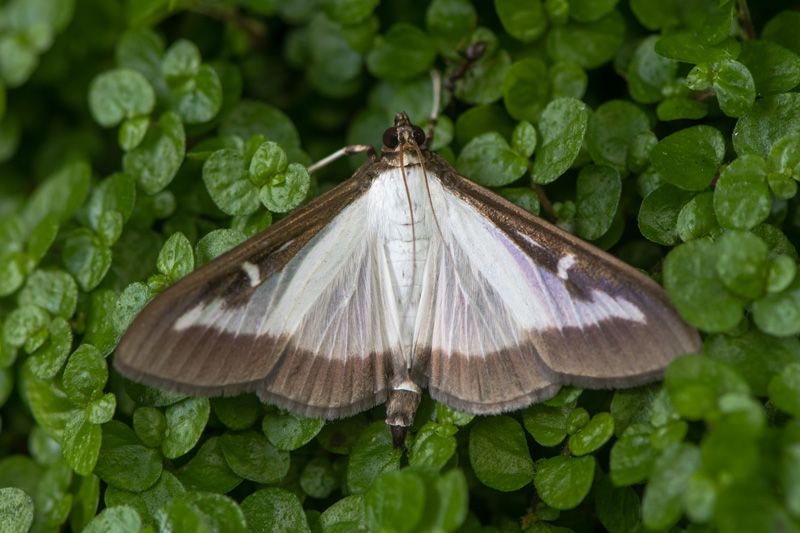
Box Tree Moth – Cydalima perspectalis
Box Tree Moth – Cydalima perspectalis
Description of Insect:
The box tree moth (Cydalima perspectalis) is an invasive pest that exclusively targets Buxus species. Native to East Asia, this moth has become a significant threat to boxwood species in Europe and the USA. The adult moth has a wingspan of 40-45 mm and exhibits two main color morphs. The most common morph features white wings with a brown border, while the less frequent form is entirely brown with a faint white streak.
Box tree moth larvae are the primary cause of damage to boxwood plants. These caterpillars are black and green with yellow, green, black, and white stripes running longitudinally along their bodies. The larvae can grow up to 40 mm in length and pass through 5 to 7 instars, developing into pupae.
The pupae are 25-30 mm long and are difficult to find since they are hidden between the leaves. At the beginning of pupation, they are green with brown longitudinal lines, which transform into light brown pupae with a dark pattern.
Life cycle of Box Tree Moth
The life cycle of the box tree moth consists of four stages: egg, larva, pupa, and adult. Their life cycle can vary depending on climatic conditions, with 1-5 generations per year observed in some regions.
Females lay pale yellow eggs in clusters of 5-20 on the undersides of boxwood leaves, typically in sheltered locations. The eggs hatch within 3 days, releasing larvae that begin feeding immediately. The larval stage is the most damaging phase, lasting almost 14 days, during which the caterpillars voraciously consume boxwood leaves and bark.
Once fully developed, the larvae spin silk cocoons on the host plant, where they pupate for 14 days. The adult moths emerge, mate, and repeat the cycle. They can survive for almost a month, and are strong fliers, dispersing 4 to 6 miles.
Damage they cause:
The box tree moth is a highly destructive pest with severe ecological, economic, and aesthetic impacts.
- Ecological Impact: Boxwood plants play an important role in many ecosystems, providing shelter and food for various organisms. The destruction caused by box tree moth larvae can lead to significant declines in boxwood populations, disrupting local biodiversity. In regions where native boxwood species are already vulnerable, infestations exacerbate their decline and may push them toward extinction.
- Economic Impact: The ornamental horticulture industry, which relies heavily on boxwood plants for landscaping, has been hit hard by the box tree moth. Boxwood is the highest-selling evergreen shrub. Infested plants often become defoliated, leading to a decline in their aesthetic and commercial value. Additionally, nurseries and landscapers face increased costs for monitoring, treating, and replacing damaged plants. According to an estimate, Box tree moths pose a significant risk to the boxwood nursery trade, with annual losses exceeding $140 million.
- Aesthetic Impact:In urban and suburban settings, boxwood plants are prized for their dense foliage and ability to form elegant hedges and topiaries. The larvae of the box tree moth strip leaves and bark, leaving behind skeletonized plants covered in silk webbing and green, ball-shaped frass. This not only ruins the appearance of the plants but also weakens them, making them susceptible to secondary infections and eventual death. The loss of healthy boxwood plants diminishes the visual appeal of gardens, parks, and historic landscapes.
